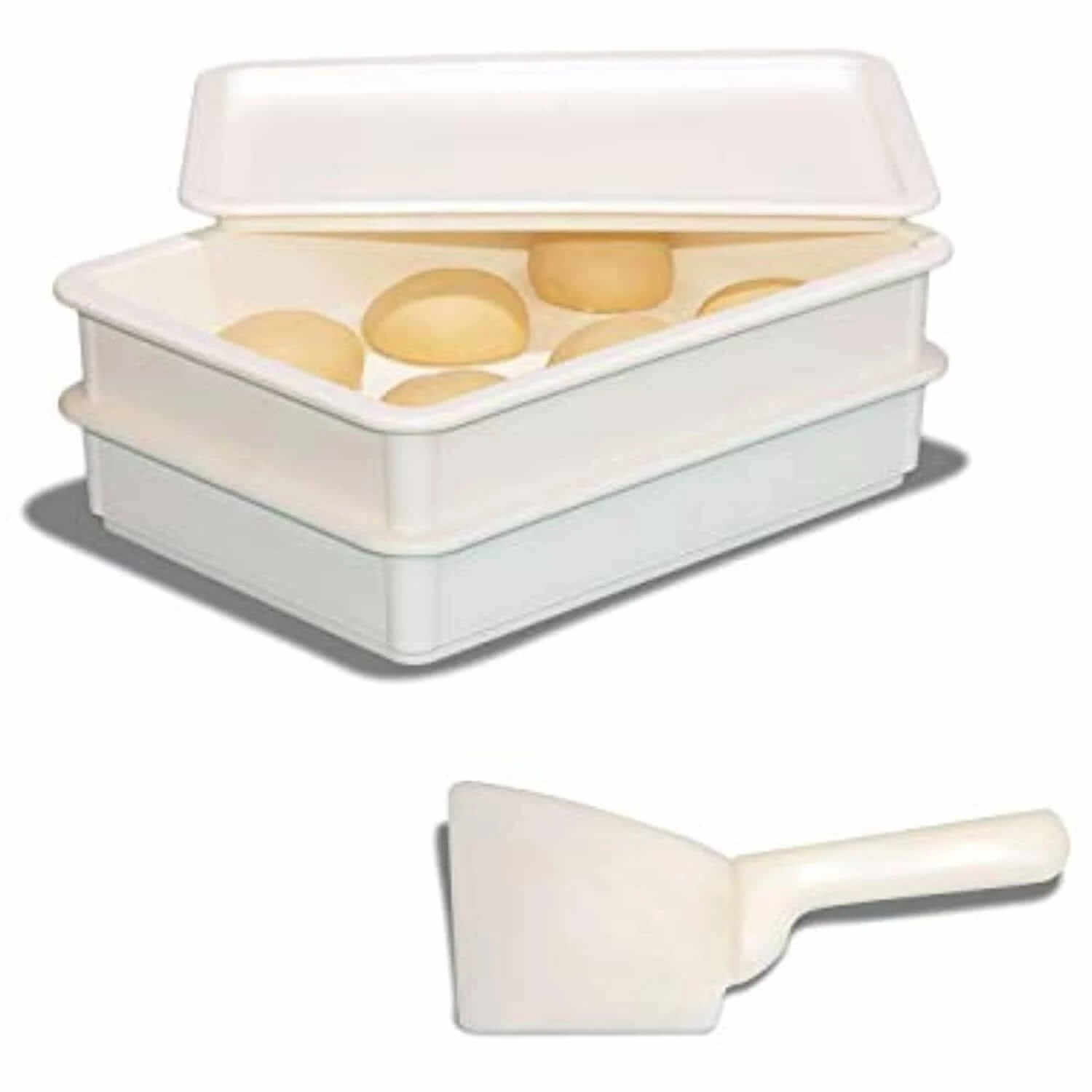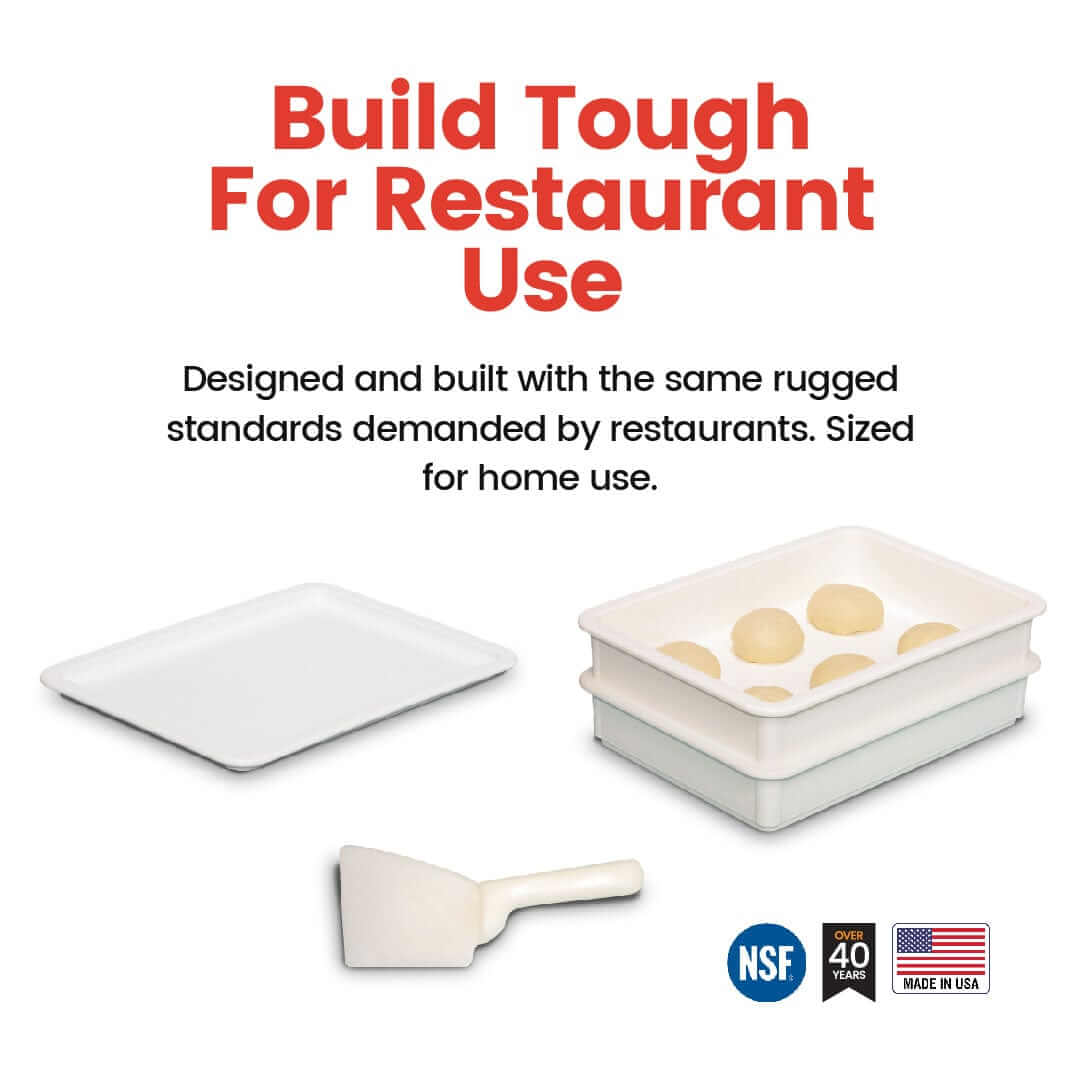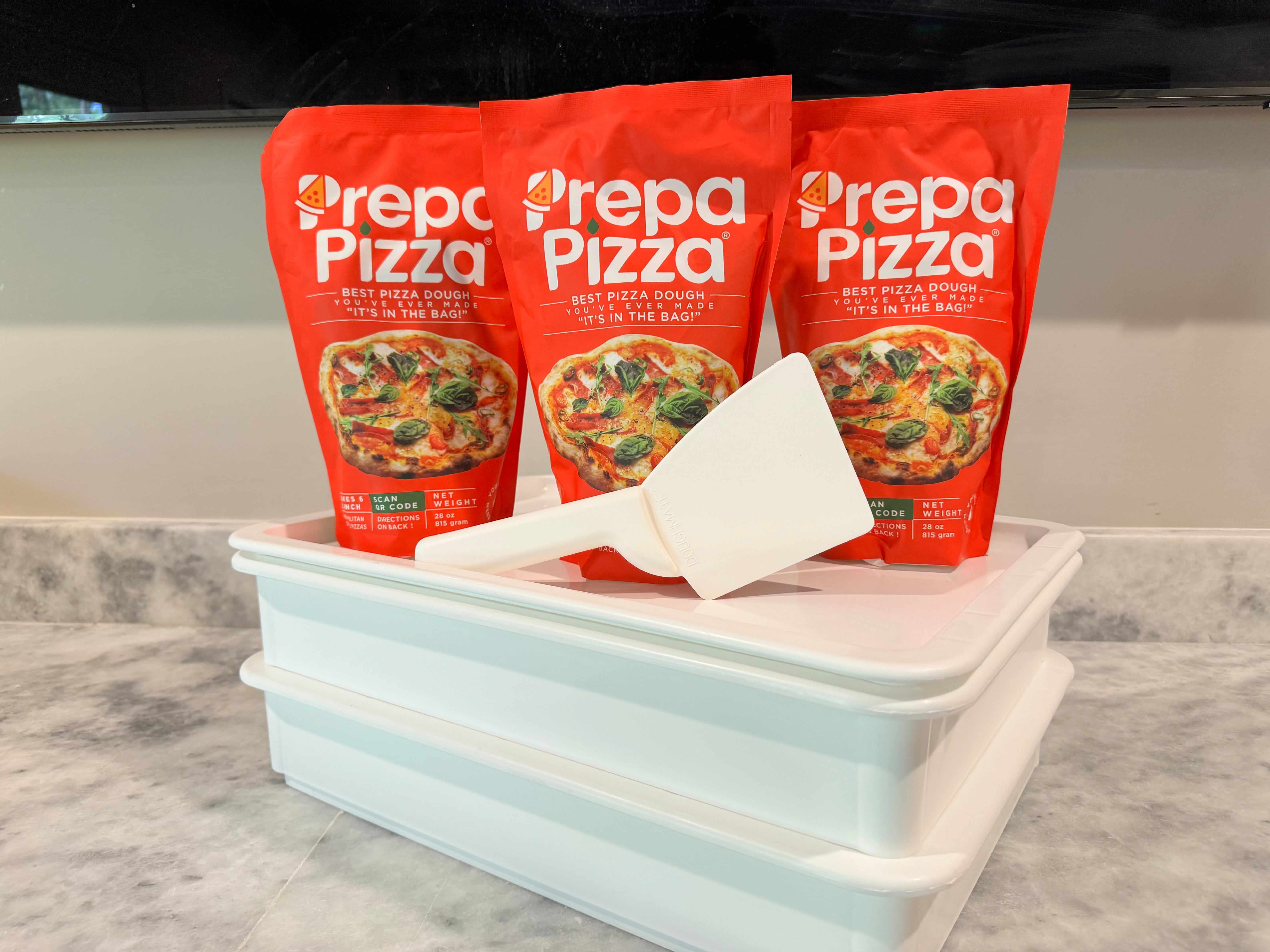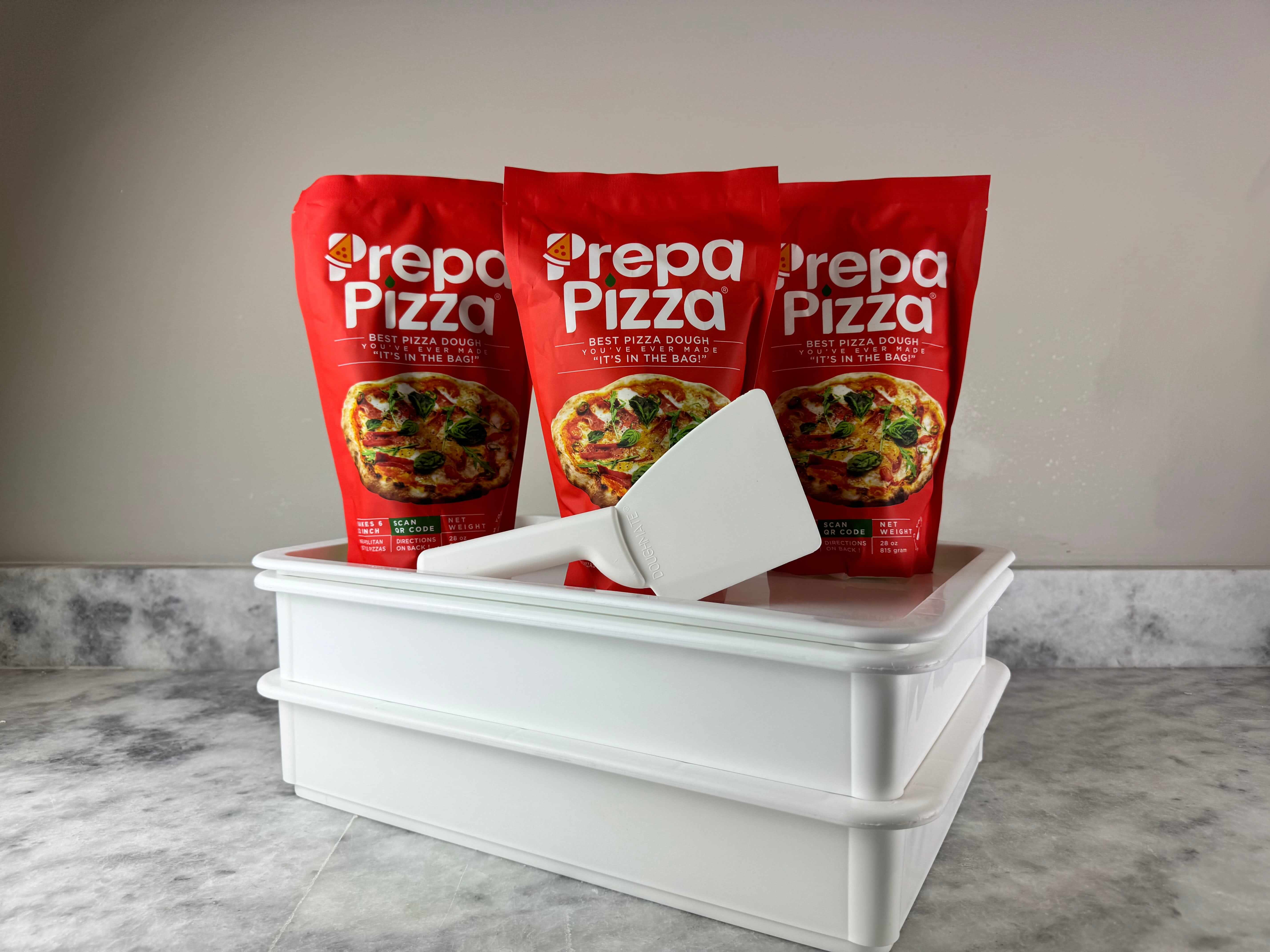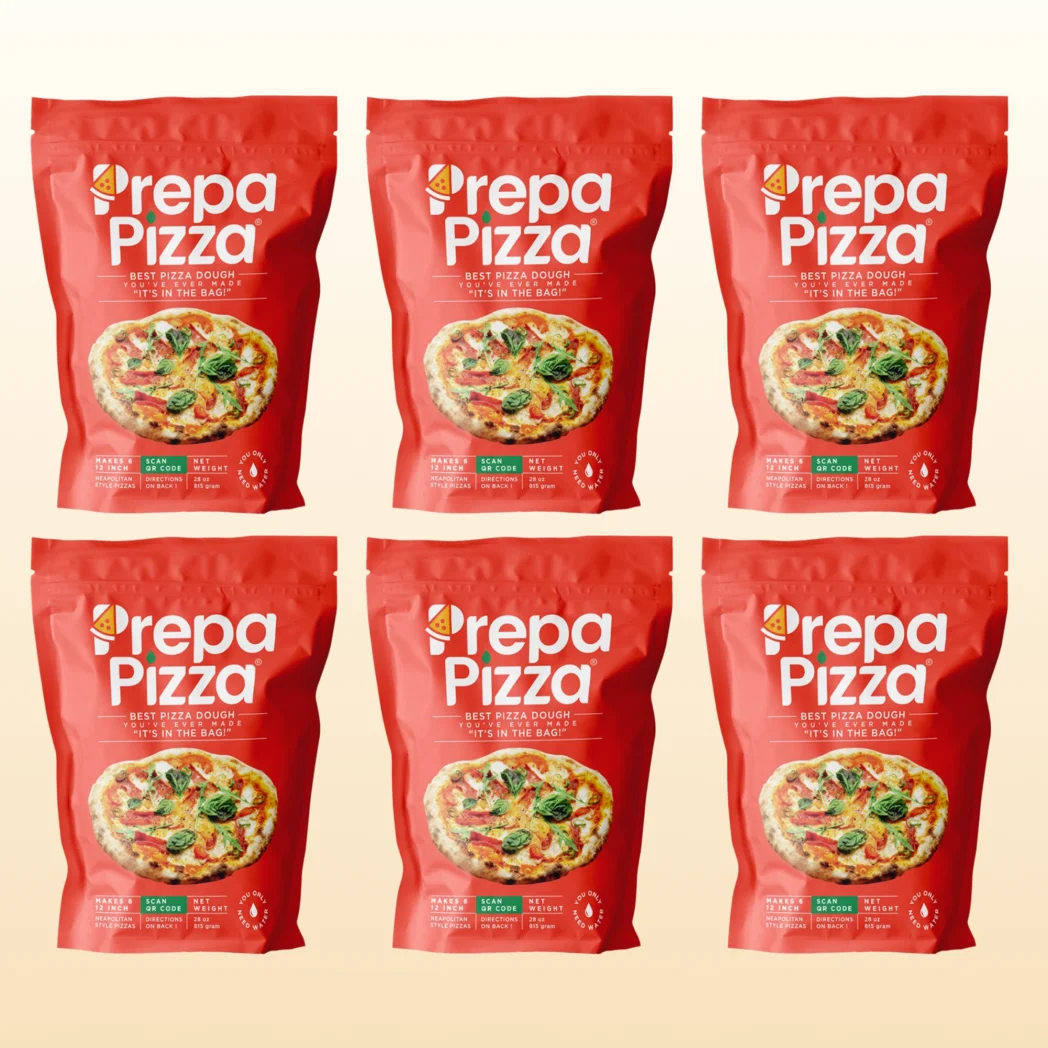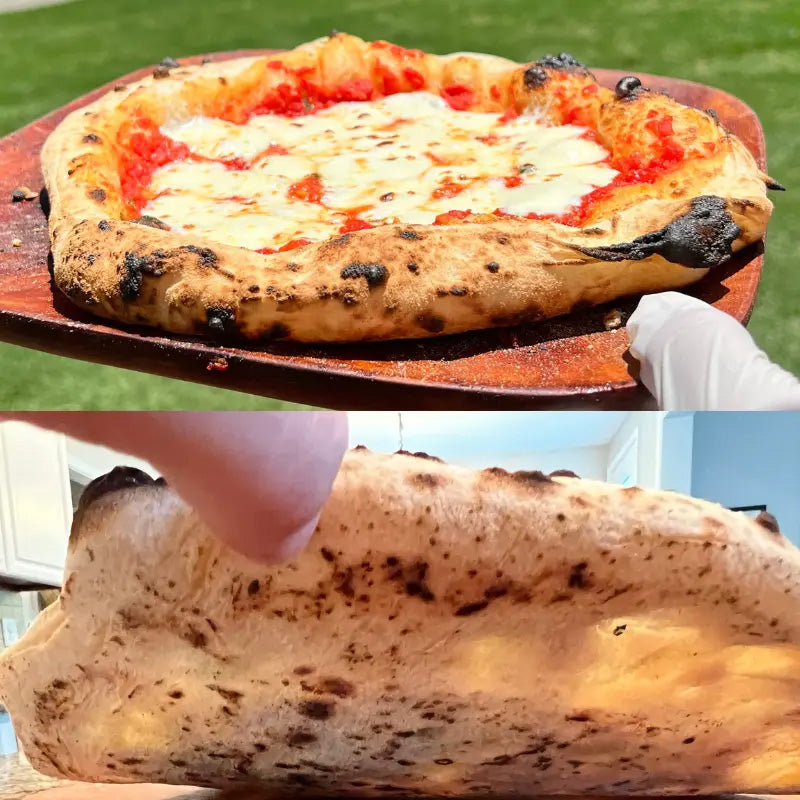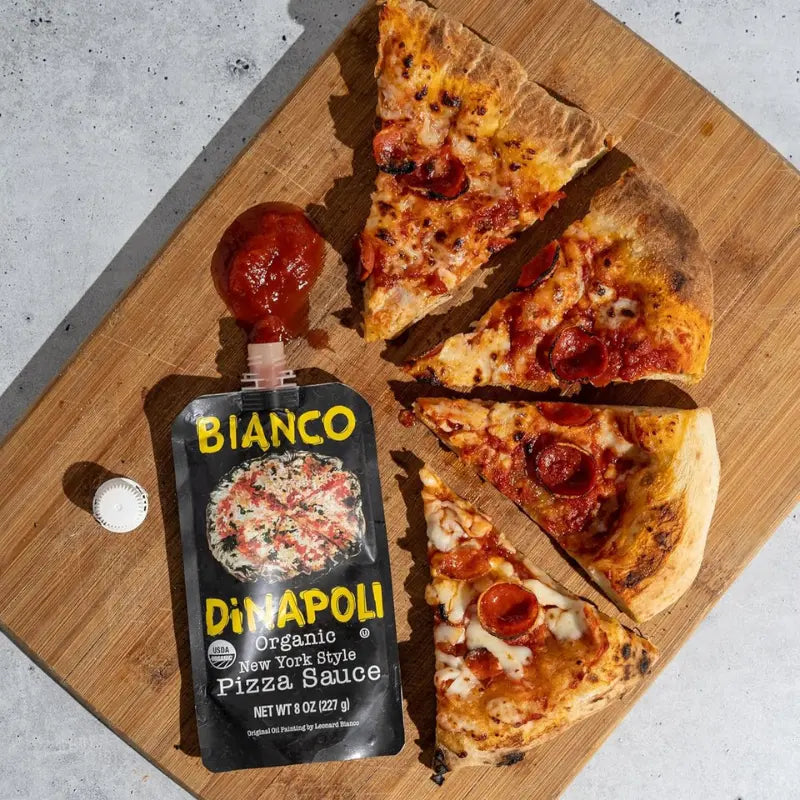
Wood Fired Pizza Base: The Key to Authentic Flavor and Perfect Texture
If you're looking to elevate your pizza night, the foundation of a great pizza begins with the base. A well-crafted wood-fired pizza base is essential for achieving that perfect balance of crunch, chewiness, and smoky flavor that sets wood-fired pizzas apart from the rest. With Prepa Pizza's premade dough, you can enjoy the authentic experience of wood-fired pizza without the hassle of making the dough from scratch. Discover our premium quality pizza dough, made with quality ingredients to guarantee a delicious result every time.
Understanding the characteristics of a wood-fired pizza base can take your culinary skills to the next level. The unique cooking environment allows for rapid heat transfer, creating a delightful crust that's both crispy and flavorful. By utilizing Prepa Pizza's dough, you can easily replicate this restaurant-quality experience in your own kitchen.
Get ready to impress your family and friends as you explore how to achieve the perfect wood-fired pizza base. With the right techniques and Prepa Pizza's premade dough, you'll be whipping up delicious pizzas that rival those from renowned pizzerias. Enjoy the journey of mastering this timeless culinary art!
Understanding the Wood Fired Pizza Base
A wood fired pizza base is fundamental to creating an authentic pizza experience. The quality of the base affects not just the structure but also the flavor and texture, enhancing the overall enjoyment of your homemade pizza. Using Prepa Pizza's premade dough can simplify the process while ensuring a restaurant-quality crust.
Defining a Wood Fired Pizza Base
A wood fired pizza base is typically made with high-quality ingredients, resulting in a crust that is both crispy and chewy. The dough is shaped into a thin crust, which allows for even cooking and a quick baking time in a wood fired oven. The unique flavor comes from cooking over wood, which imparts a subtle smokiness, distinguishing it from standard pizza bases.
For an authentic experience, consider using Prepa Pizza's premade dough, which is expertly crafted for optimal performance in wood fired ovens. It’s designed to be easy to handle, making pizza making more accessible for everyone.
Key Characteristics of a Traditional Crust
Traditional wood fired crusts exhibit several key characteristics:
- Crispness: The intense heat from the wood fired oven creates a delightful crunch on the outside.
- Chewiness: A well-made dough achieves the right balance between firmness and elasticity, allowing you to enjoy that perfect bite.
- Texture: The crust often has blistered spots, adding visual appeal and layers of texture.
When prepared with quality ingredients and baked properly, the pizza base becomes the foundation of your pizza, elevating the dish to new levels.
Importance of the Pizza Base in Flavor and Texture
The pizza base plays a crucial role in the overall flavor profile of your pie. A quality base enhances toppings without overpowering them.
- Flavors: The subtly charred exterior complements fresh ingredients, enhancing flavors.
- Texture: A well-executed crust supports the toppings, preventing them from making the base soggy.
Incorporating Prepa Pizza's premade dough ensures that your crust will meet these expectations, offering a reliable option for your pizza-making endeavors.
Essential Ingredients and Preparation
Creating the perfect wood-fired pizza base hinges on selecting the right ingredients and preparation techniques. Your choice of flour, the role of yeast and water, and the incorporation of olive oil and sea salt are critical. Prepa Pizza offers premade pizza dough, made using quality ingredients to ensure you achieve the best results effortlessly. Check out their pizza dough kit for an easy start.
Choosing the Right Flour
The type of flour you select affects the texture and flavor of your pizza dough. Bread flour is a popular choice due to its high protein content, which contributes to a chewy crust. All-purpose flour can also work well, although it might produce a softer base.
Semolina flour adds a unique texture and can be mixed with other flours for added flavor. The goal is to create a dough that is pliable yet firm enough to hold its shape. Experiment with various flour combinations to find the perfect balance for your preferences.
Role of Yeast and Water
Yeast is essential for leavening the dough, providing that airy texture we all love in a crust. Instant yeast is particularly convenient as it doesn’t need proofing, while dry yeast may require activating in lukewarm water before use.
The temperature of the water matters too—lukewarm water helps activate the yeast effectively, ensuring proper fermentation. For a well-risen dough, balance is key; using too much or too little water can affect the dough's consistency and performance during baking.
Incorporating Olive Oil and Sea Salt
Olive oil adds a rich flavor to the dough and enhances its texture. Extra virgin olive oil is ideal for this purpose, as it has a robust taste. A tablespoon or two is usually sufficient for the dough, contributing to its elasticity.
Sea salt is not just for flavor; it strengthens the dough structure. Always incorporate it after mixing the flour and yeast, as direct contact with yeast can slow down fermentation. Just a teaspoon of sea salt will elevate the taste of your pizza crust significantly.
Kneading and Dividing Dough
To develop the dough's gluten structure, kneading is critical. You should knead the dough for about 8-10 minutes, until it becomes smooth and elastic. This process helps ensure that your pizza has a perfect chewy texture.
After kneading, divide the dough into equal portions, typically into dough balls weighing about 250 grams each for individual pizzas. Allow these balls to rest and rise to enhance their flavor and texture. Properly divided and rested dough helps you create individual pizzas that are perfectly shaped and easier to handle.
Wood Fired Oven Techniques
Understanding how to effectively use a wood fired oven is essential for creating the perfect pizza base. It involves careful preparation, precise temperature management, and techniques for achieving even cooking. Here’s what you need to know to master your wood-fired oven.
Selecting and Preparing a Wood Fired Oven
Choosing the right wood fired oven is crucial. Smaller, portable models work well for home use, while larger brick ovens offer superior heat retention. Ensure your oven is clean and free of ashes before starting. This helps maintain optimum airflow and temperature.
Once you've selected your oven, preheat it properly. Use hardwoods like oak or hickory for a robust flavor. Allow the fire to burn down until the flames subside, leaving hot coals behind. The ideal cooking temperature is around 500°F (260°C).
For the best results, use Prepa Pizza’s premade dough, as it is specifically crafted to handle the high heat of wood-fired cooking.
Managing Oven Temperature
Controlling the oven temperature is a key factor in cooking. After preheating, monitor the temperature using an infrared thermometer. This ensures the heat is even and appropriate.
Adding or removing wood will affect the temperature. If it gets too hot, add a few logs to maintain heat. For something cooler, push logs to one side to reduce heat under the cooking area.
You can determine when to bake by the color of the coals. A white-hot glow indicates it's time to cook. The goal is maintaining a consistent temperature throughout the process to achieve that perfect crust.
Achieving Even Cooking
For even cooking, properly set your pizza onto a well-floured pizza peel. This prevents sticking and allows for smooth transfer into the oven. Rotate the pizza halfway through cooking for uniform heat exposure.
Use a combination of high heat from below and radiant heat from above for best results. The crust should rise slowly, creating a delightful texture.
Check the pizza after 60-90 seconds. When the crust is golden and the cheese is bubbling, it’s done. Mastering these techniques will significantly enhance your wood-fired pizza experience.
Building and Topping the Pizza Base
Creating a delicious pizza base starts with your choice of dough and the right toppings. Using Prepa Pizza’s premade dough allows you to focus on building the best pizza possible without the time-consuming preparation. This high-quality dough is crafted to ensure excellent flavor and texture. You can explore it here.
Applying Pizza Sauce and Cheese
Begin by applying a solid layer of pizza sauce to your dough. A classic tomato sauce made from San Marzano tomatoes provides a rich, robust flavor. Spread the sauce evenly, leaving about half an inch from the edge for a crust. This allows the crust to bake perfectly without burning.
Next, select your cheese. Fresh mozzarella is a favorite, especially when combined with buffalo mozzarella for a creamy texture. Shredded cheese is also an option for a more even melt.
For an extra punch, consider adding a sprinkle of fresh basil or a dash of oregano before baking, enhancing the overall flavor profile.
Selecting Classic Toppings
Classic toppings enhance the pizza experience. Pepperoni, ham, or prosciutto are popular choices for their savory taste. You can also opt for bell peppers and red onions for a crunchy texture.
Olives and anchovies add a briny flavor that pairs well with the sweetness of the tomato sauce. If you prefer a touch of freshness, consider adding cherry tomatoes.
Ensure all toppings are evenly distributed over the cheese for balanced bites.
Adding Gourmet Ingredients
For a unique twist, gourmet ingredients can elevate your pizza. Brie or goat cheese adds creaminess and depth, transforming the traditional feel.
Fresh basil leaves are a must for a fragrant touch, especially when added right before serving. You can even make a delicious calzone by folding the dough over your selected toppings.
Experimenting with these ingredients allows you to create a pizza tailored to your taste, impressing anyone at your table.
Serving and Enjoying Wood Fired Pizza
The experience of serving and enjoying wood-fired pizza elevates your culinary achievement to a whole new level. With the right techniques for slicing, presentation, and intriguing pairings, you can create a remarkable meal. Prepa Pizza offers premade pizza dough to help you focus on these important details, ensuring a delicious base to showcase your toppings. You can explore their premium quality sourdough here.
Slicing and Presentation
Proper slicing enhances both the presentation and enjoyment of your wood-fired pizza. Start by allowing the pizza to rest for a few minutes after baking; this will make slicing easier. Use a sharp pizza cutter or a large knife for clean cuts. Aim for uniform slices to ensure every guest receives a generous portion.
When it comes to presentation, consider using a wooden pizza board. This adds a rustic charm and helps maintain the heat of the pizza. Garnish with fresh herbs, like basil or arugula, for a vibrant touch. Drizzling with high-quality olive oil or balsamic glaze adds an extra layer of flavor and visual appeal.
Pairings and Accompaniments
Pairing your wood-fired pizza with the right beverages and sides can enhance the dining experience. Consider serving with a light salad, such as arugula with lemon vinaigrette, to complement the richness of the pizza. Additionally, a selection of dipping sauces, like marinara or pesto, can provide a fun, interactive element.
For beverages, opt for a crisp white wine or light beer. Their refreshing notes can balance the smoky flavors of the wood-fired crust. You might also explore craft cocktails with citrus or herbal elements to create a delightful pairing. With thoughtful pairings and presentation, your wood-fired pizza experience can truly shine.
Frequently Asked Questions
When considering wood fired pizza, several factors differentiate it from traditional styles. Understanding the nuances of the dough and how it interacts with high heat can enhance your pizza-making experience. Prepa Pizza offers premium premade pizza dough that ensures you get quality ingredients and a restaurant-quality base for your creations. Check out the dough options here.
What makes wood fired pizza dough different from regular pizza dough?
Wood fired pizza dough typically has a higher hydration level, resulting in a chewier texture and a crispier crust. The combination of high heat and the unique cooking environment of a wood fired oven allows for a faster bake, enhancing the flavors.
Can store-bought pizza dough be used in a wood-fired pizza oven?
Yes, you can use store-bought pizza dough in a wood fired oven. However, using a dough designed for high temperatures, like those from Prepa Pizza, can provide superior results. The right dough will withstand the intense heat better and give you that authentic texture and taste.
How do you create the best thin crust for a wood fired pizza?
To create an optimal thin crust, stretch the dough by hand rather than using a rolling pin, which can compress the air bubbles. Preheating the oven to a high temperature will help achieve the desired crispness while baking.
Which type of flour is ideal for authentic wood fired pizza dough?
The best flour for wood fired pizza dough is a high-protein flour, typically bread flour or Tipo 00 flour. These varieties offer the right balance of gluten strength and extensibility, essential for a well-structured crust.
What characteristics define the best base for a wood fired pizza oven?
An ideal base for a wood fired pizza oven is heat-retaining and distributes heat evenly. A thick, non-combustible material like firebrick or stone is preferred to create a consistent cooking environment, producing evenly cooked pizzas.
How do you prepare a quick wood fired pizza dough recipe?
To prepare quick wood fired pizza dough, combine flour, water, salt, and yeast. Mix until smooth, allow it to rise for about 30 minutes, then shape it into your desired form. Using Prepa Pizza's premade dough can also save time while still delivering quality.




